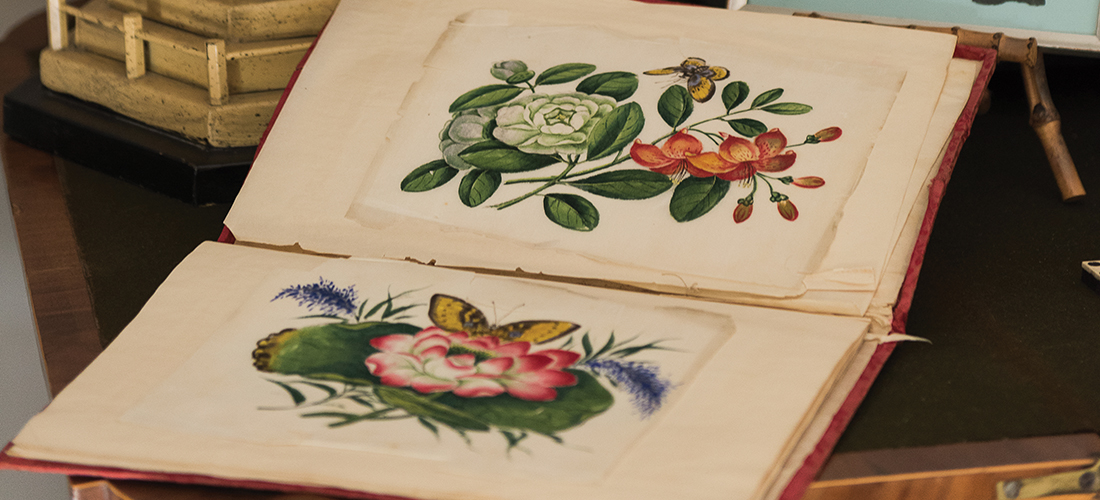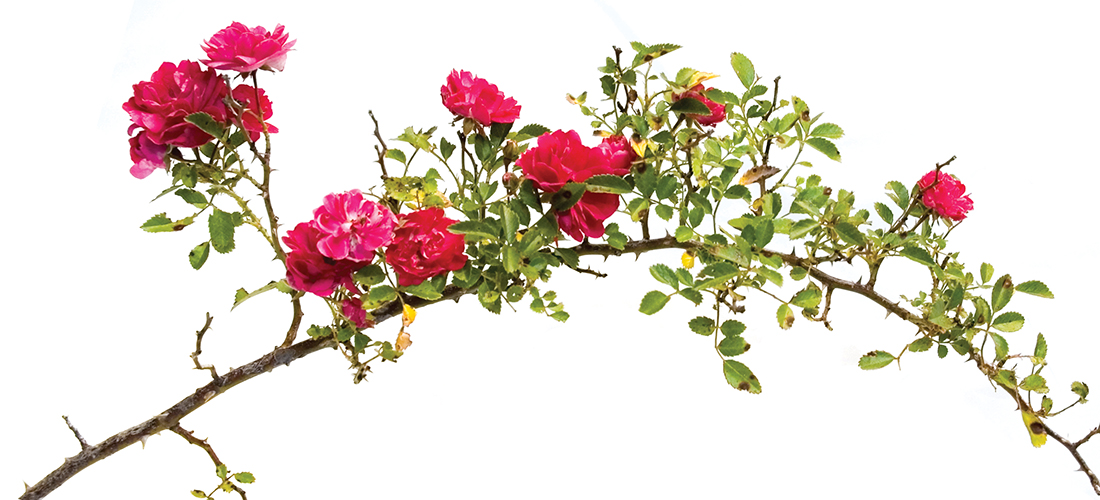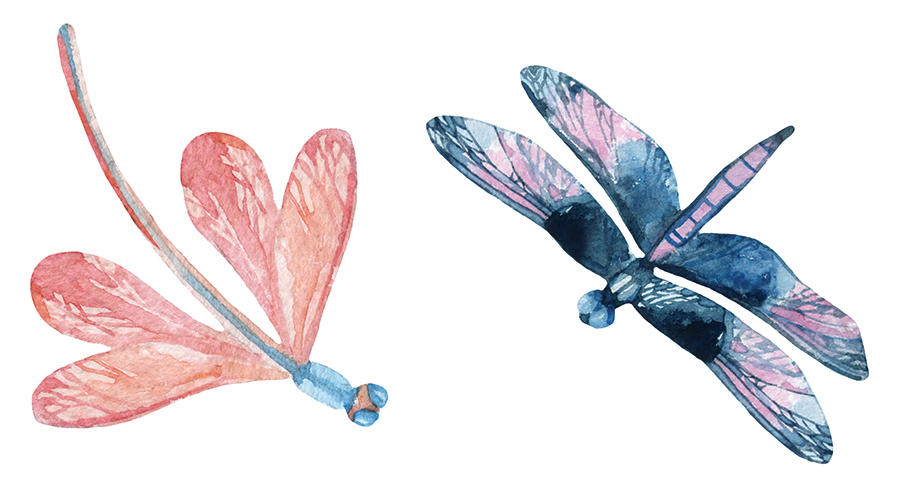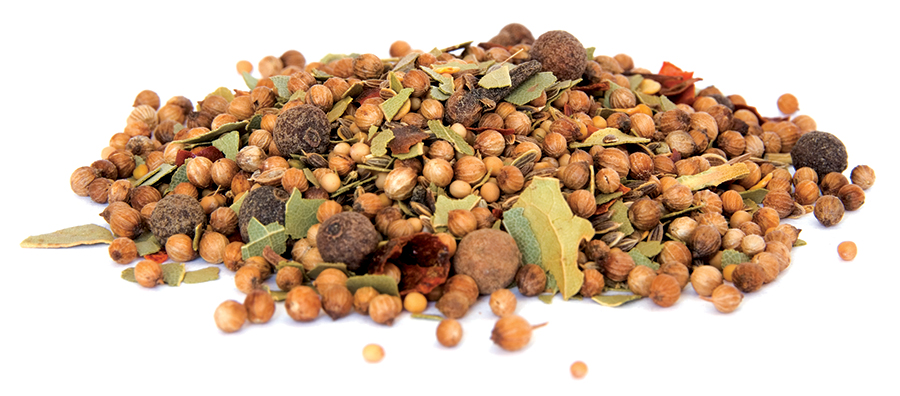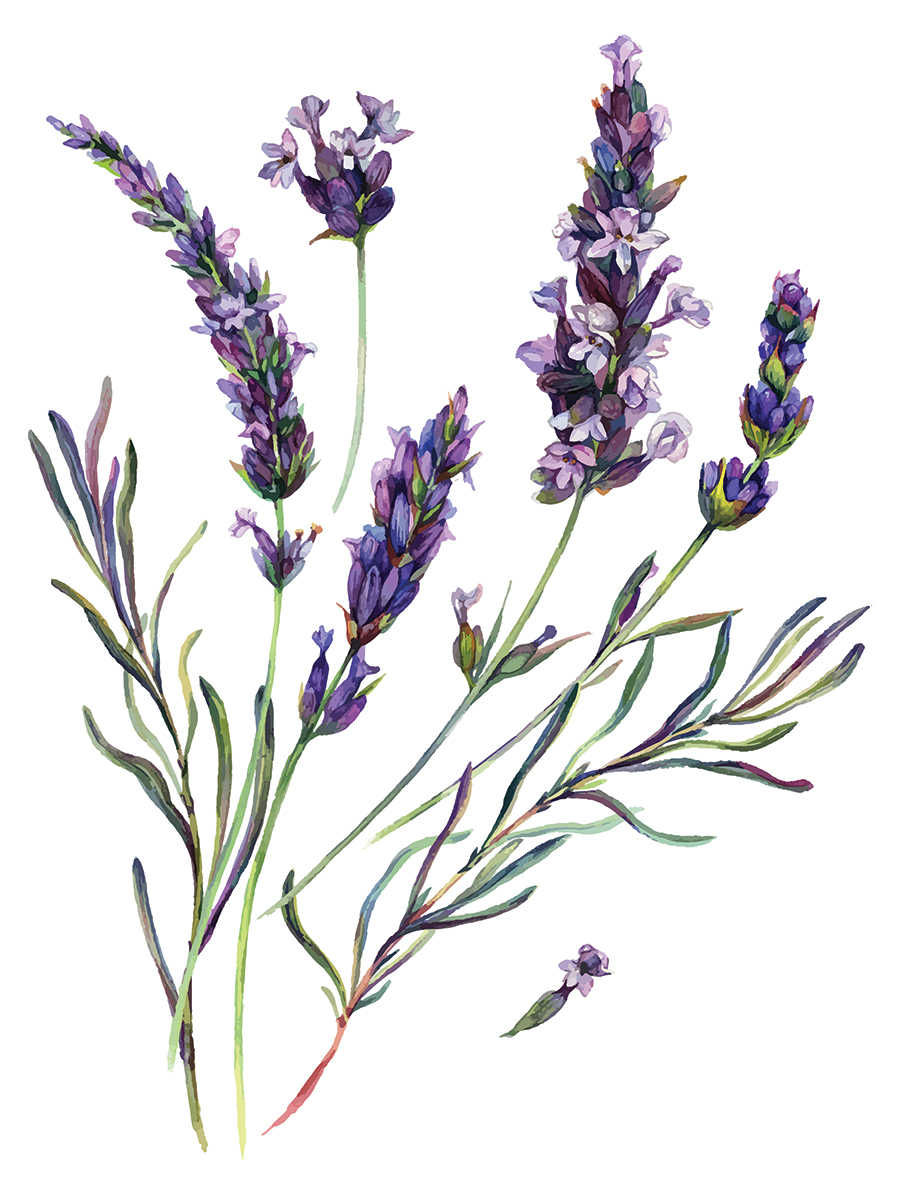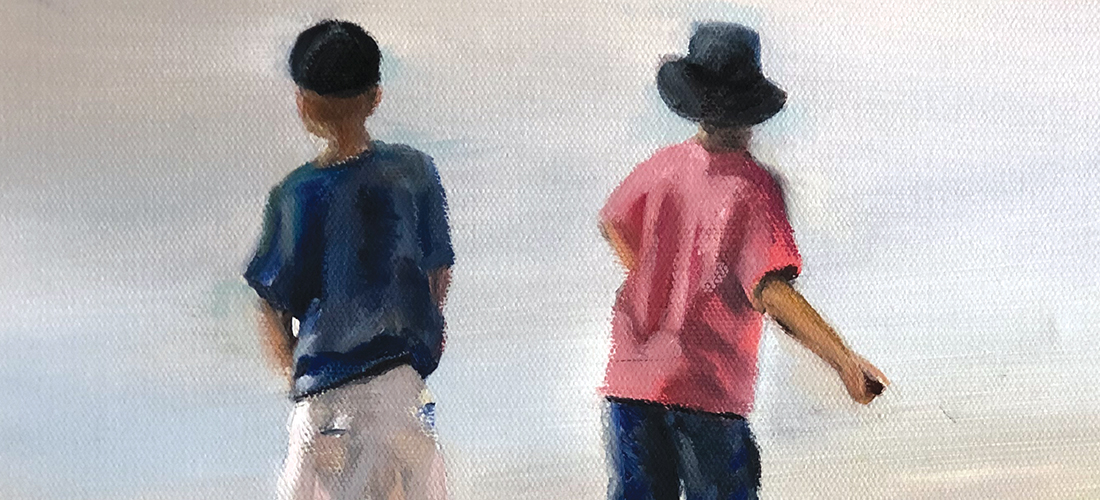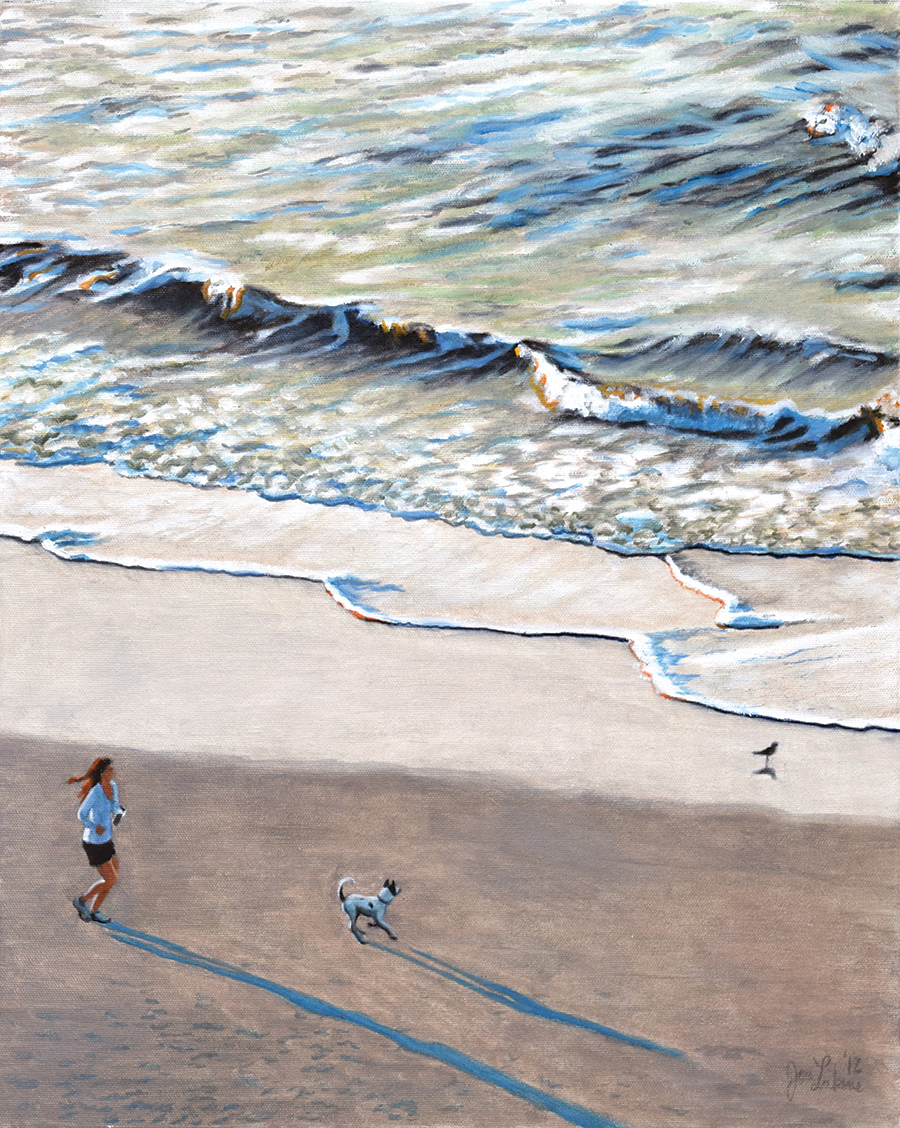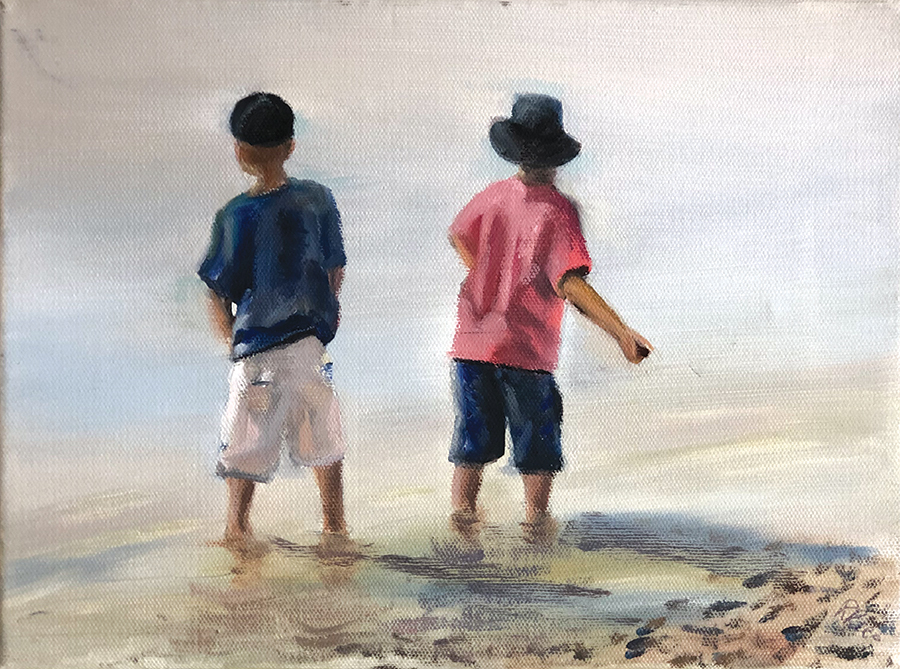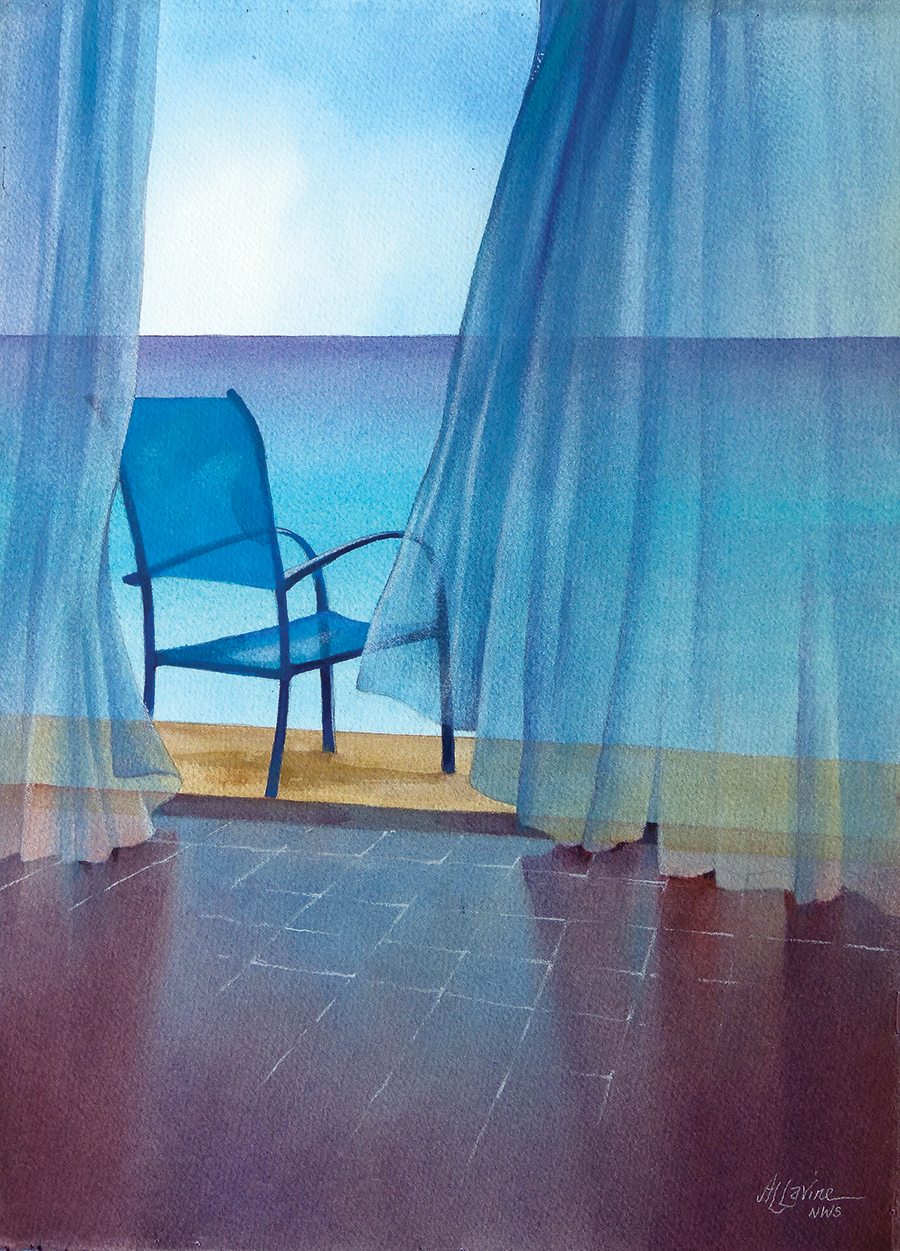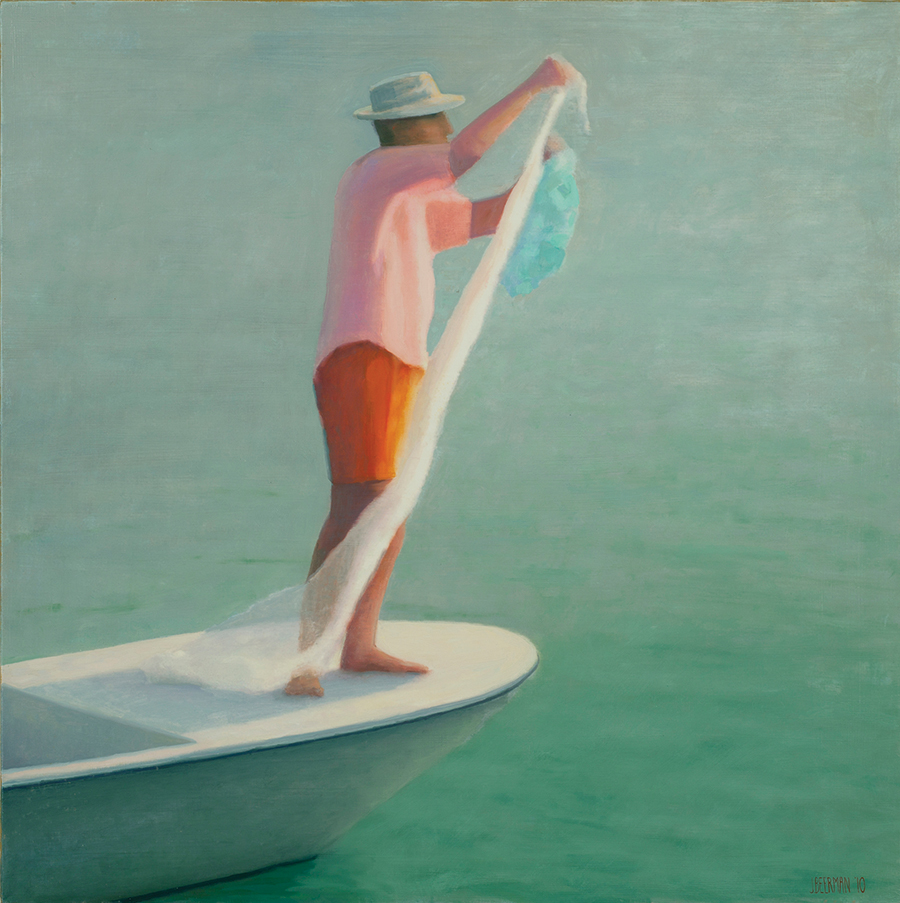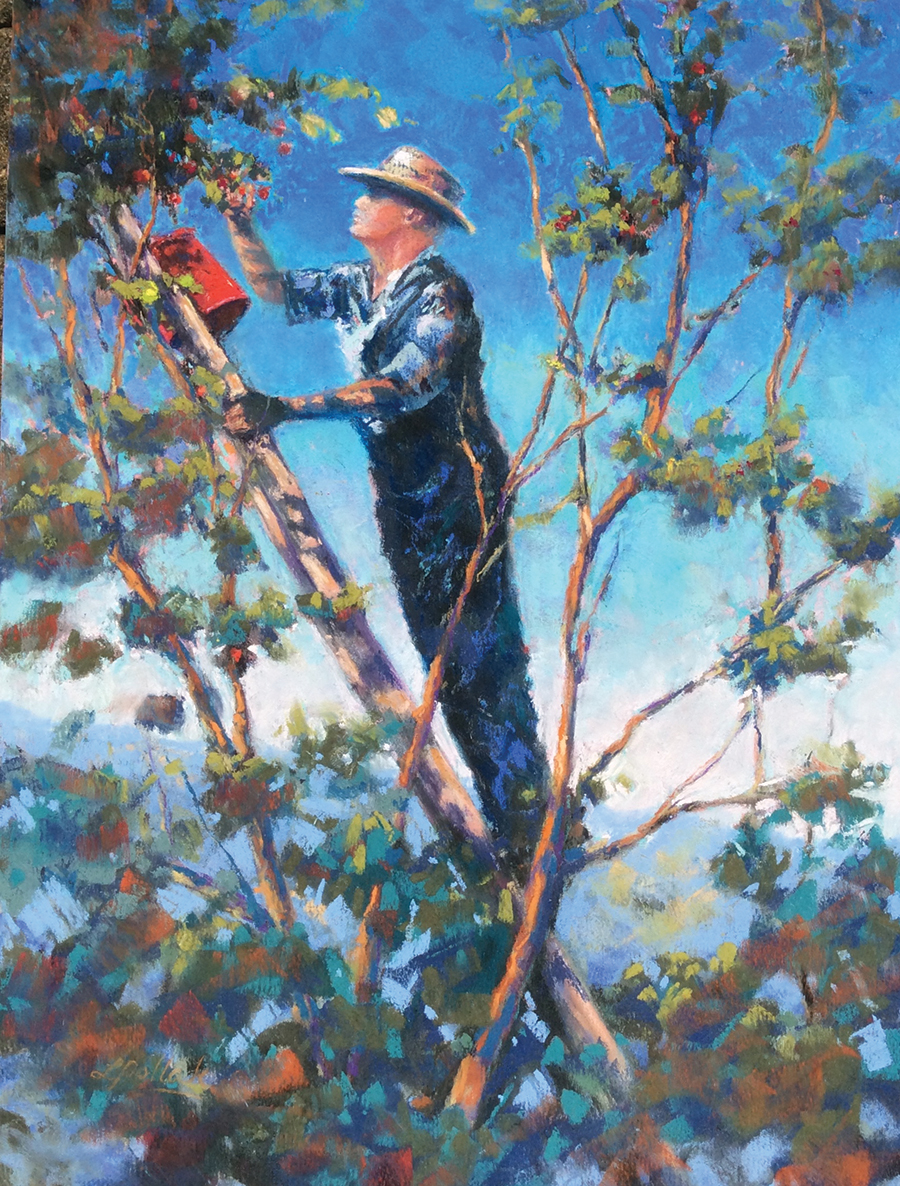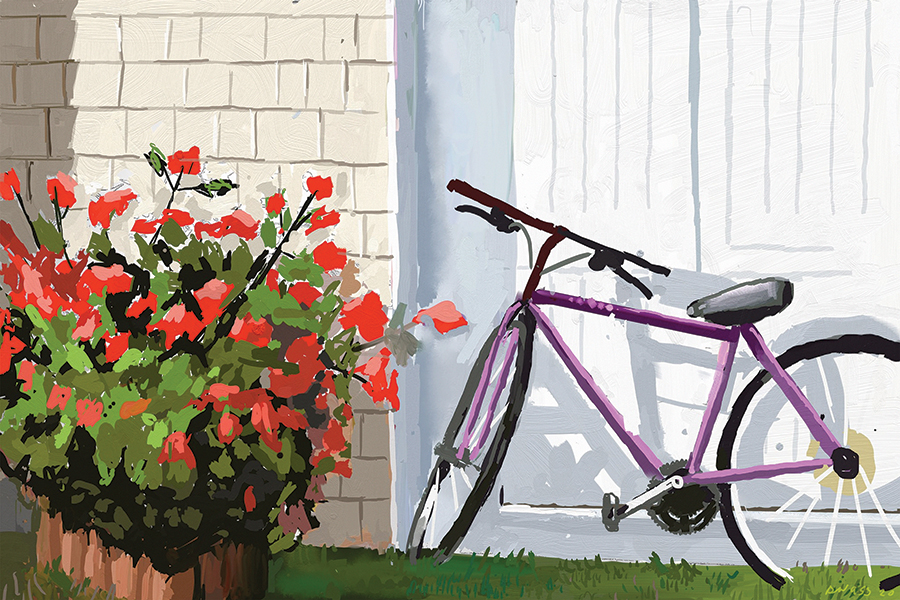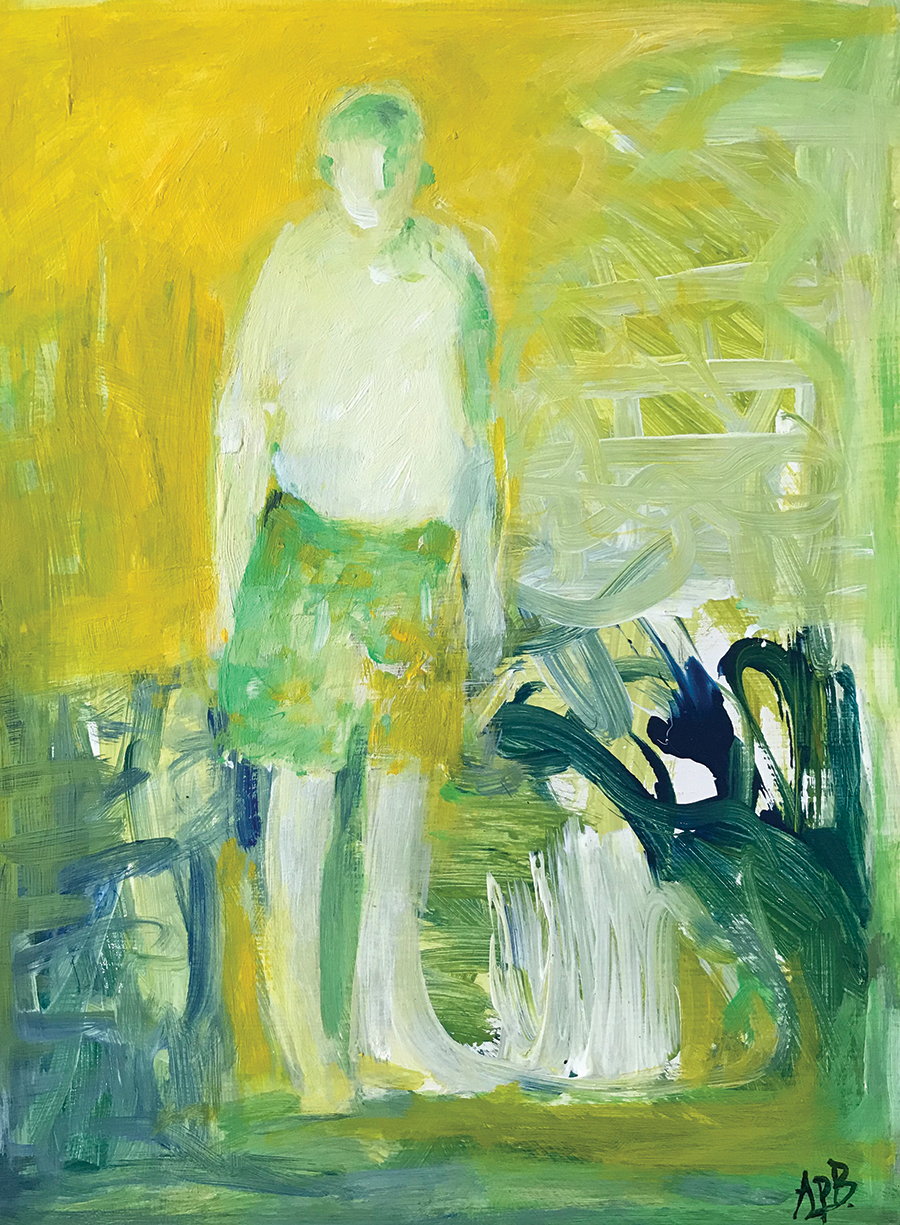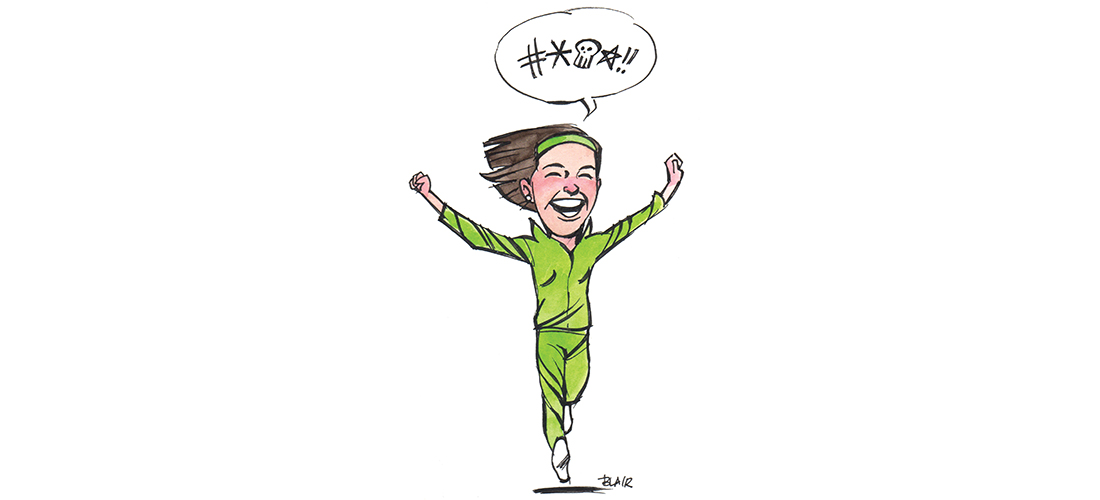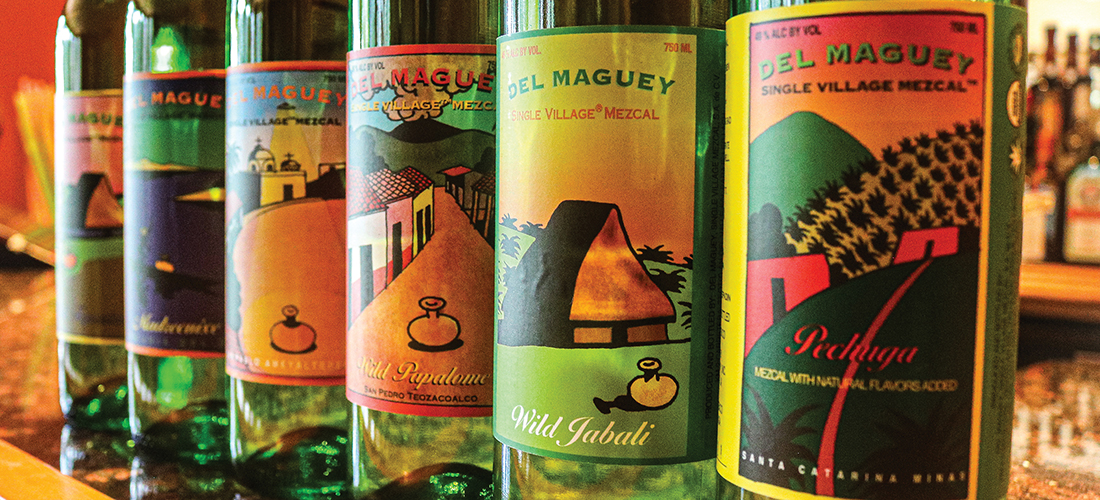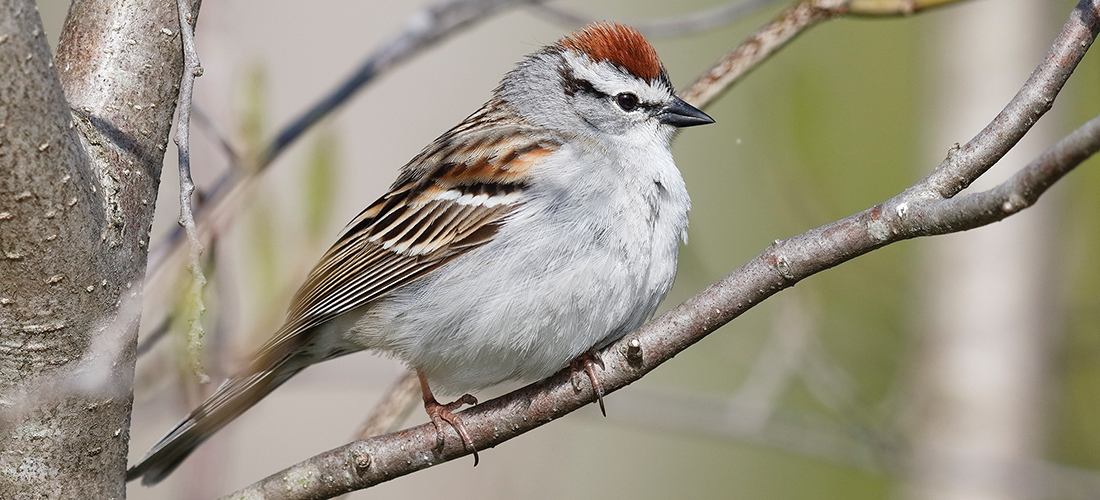Todd Nabors’ global décor
By Cynthia Adams • Photographs by Amy Freeman
Orange!
Whether in a slushie, sherbet or sunset, it’s the hue of summer. And Triad designer Todd Nabors loves all things orange. In the mix of favorite colors, orange plays a subtle, supportive role inside his new home.
In moving to a Greensboro townhouse this year, Nabors made important gains: 600 square feet of interior space, a brand new canvas to decorate and proximity to a lushly green park.
After leaving behind a quaint 1920s house in High Point’s Emerywood, he has had a fresh opportunity to reimagine his interiors, colors and appointments.
Wearing an orange Lacoste polo shirt, Nabors walks into the living room and launches into explaining how his new home took shape. Taking “pride of place” is a framed Asian wallpaper panel he’s owned for 25 years. “It was the first thing that I knew exactly where it would go,” he says. He also knew the old favorite would set the tone for all things to follow.
The French hand-blocked panel contains all his favorites: orange, its more subtle cousin, salmon, and ice blue, a favored accent. These are now encapsulated throughout.
“It’s the color scheme for the house,” says Nabors.
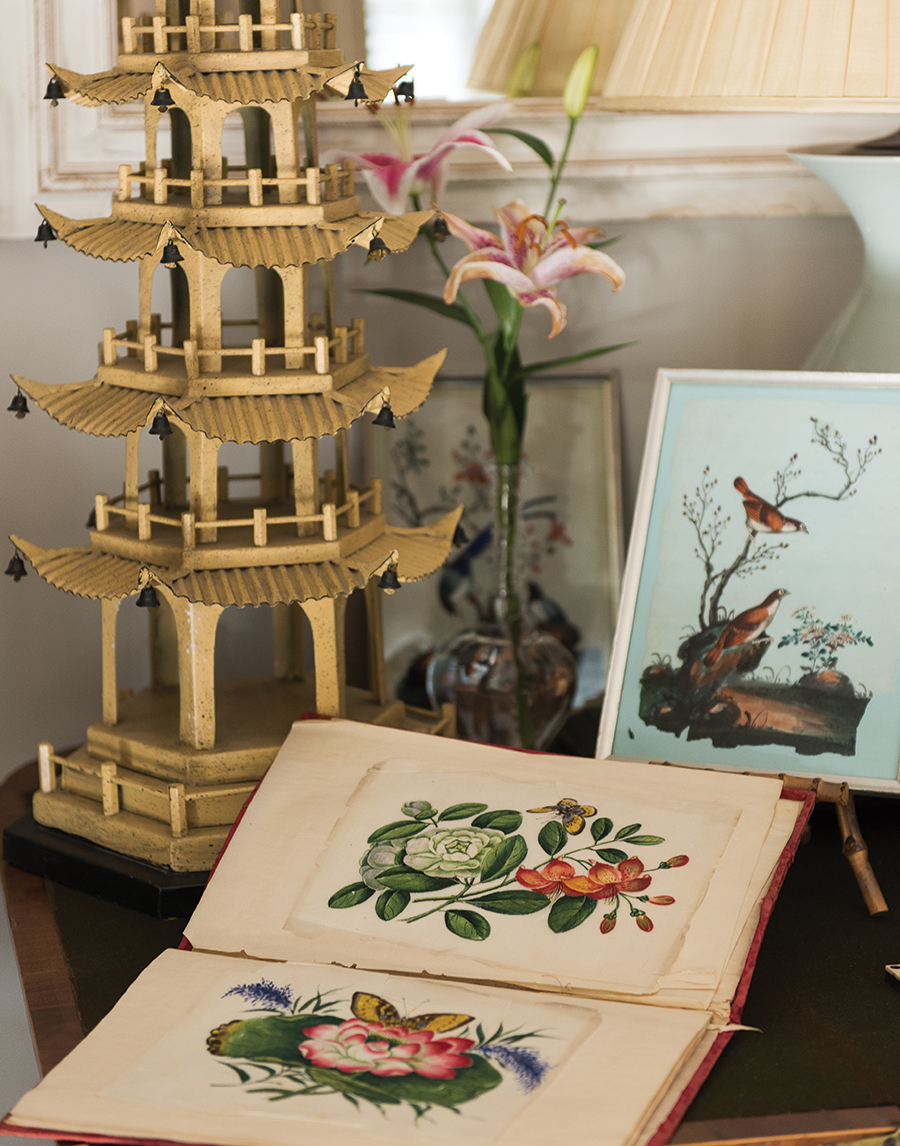
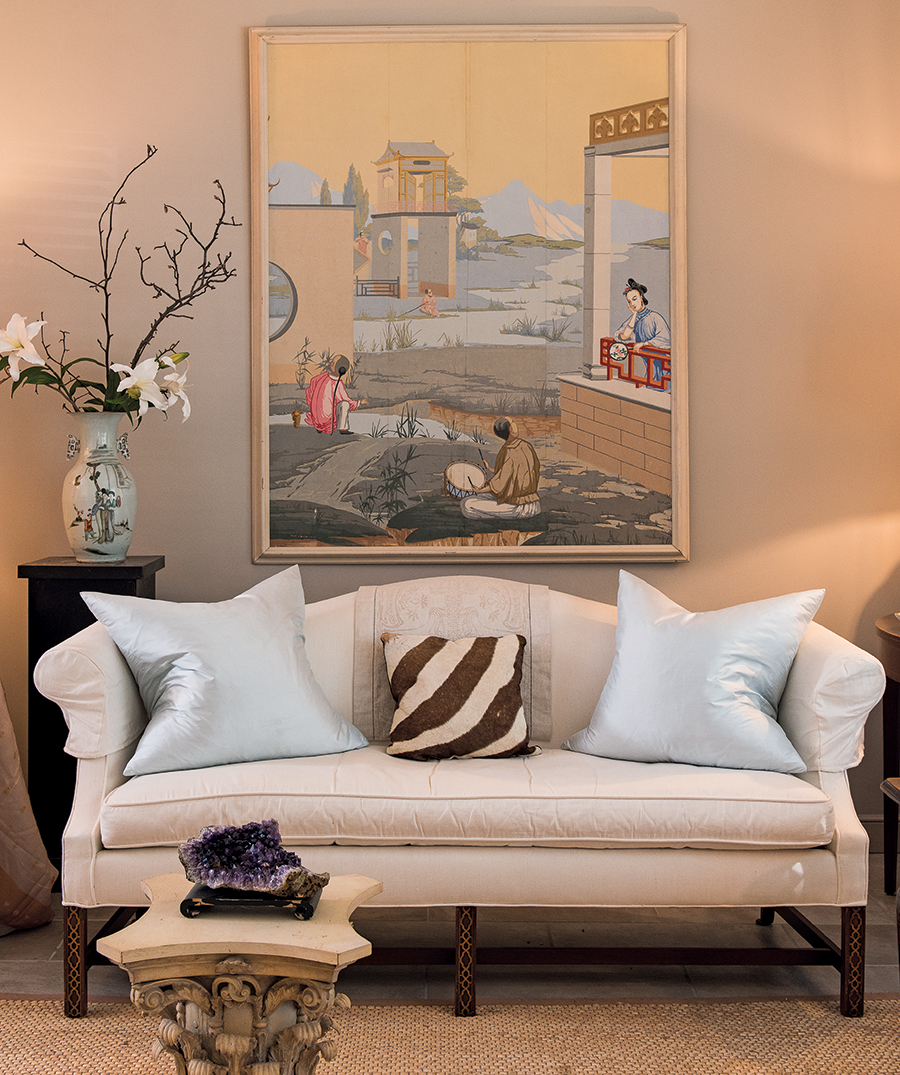
It’s hard not to quip like a school child, “orange you glad I noticed?”
No, he didn’t paint his new pad Hermès orange, but happily used it to punch up the interior.
The décor’s accents are often art and textiles from Asia, India and the Mediterranean. He has redeployed European pieces, but more than ever favors global influences from the Far and Middle East.
A trip to Japan last summer intensified Nabors’ admiration of Eastern interiors and gardens, and their spare design sense. He found the Japanese aesthetic “was disciplined and beautiful.”
“When I was in Japan, I visited Tokyo, Kyoto, Hakone, Naoshima art island and numerous small towns over a three-week period. I loved it all!”
Again, something he admired wound up consciously incorporated into his new home. Nabors collects Japanese Imari, the popular, brightly colored export porcelain. Imari’s trademark colors — rust, coral, various shades of blue and turquoise — became another unifying design thread. The color scheme lightened or intensified depending upon the room.
“It’s the one connect between my prior house and now,” he says. “Especially in the keeping room, but not in the living room. The living room is much more Palm Beach in flavor.”
Nabors has, however, furnished his home with many more Chinese pieces of art and accessories than Japanese.
As for the prized panel in the living room, it is one of six installed by designer Otto Zenke in the Greensboro Country Club’s ballroom during a refurbishment in the 1960s.
The panel is likely an iconic Zuber paper, a favorite design element used by Zenke who had previously installed panels of the French wallpaper in Chapel Hill’s iconic Carolina Inn in the late 1940s.
It would inform the overall design for Nabors, who buys and sells antique furnishings, but would never part with this particular favorite. The panel has traveled with him to each of his homes.
Here in a larger space, Nabors was free to use much more art. His love affair with art goes back to his youth when he studied art; visuals still exert a powerful influence. “I’m a visual learner,” he explains.
Throughout the house, he has used art to dramatic effect. Among his unusual collections are antique watercolors called “pith” paintings. Small, often botanical or bird illustrations, they are named for the plant-based paper they were painted upon.
“They are on paper that looks like rice paper, but is a unique style,” Nabors explains. Pith paintings grew popular in the early 19th century, as easily transportable, colorful souvenirs.
The pieces are “a way to get that exotic look without a commitment to hand-painted wallpaper,” he adds.
To unify the whole is Benjamin Moore’s “Cumulus Cloud,” a paint chosen during a remodel a few years ago. Nabors liked the smoky neutrality of the color and kept it. It was the perfect contrast for other decorative elements, blanc de chine (white porcelain) objects d’art and alabaster lamps. A single wall and trim color now extend throughout most of the downstairs, a visual trick that adds height.
Although he recreated certain elements from his former home, it’s quite different. As friend Sharon James says, “It’s lighter and more open.”
A mirror brightening a corner of the living room is one which he insists he has used for years — but it’s transformed in its new home.
“Same flavor, different house,” Nabors smiles.
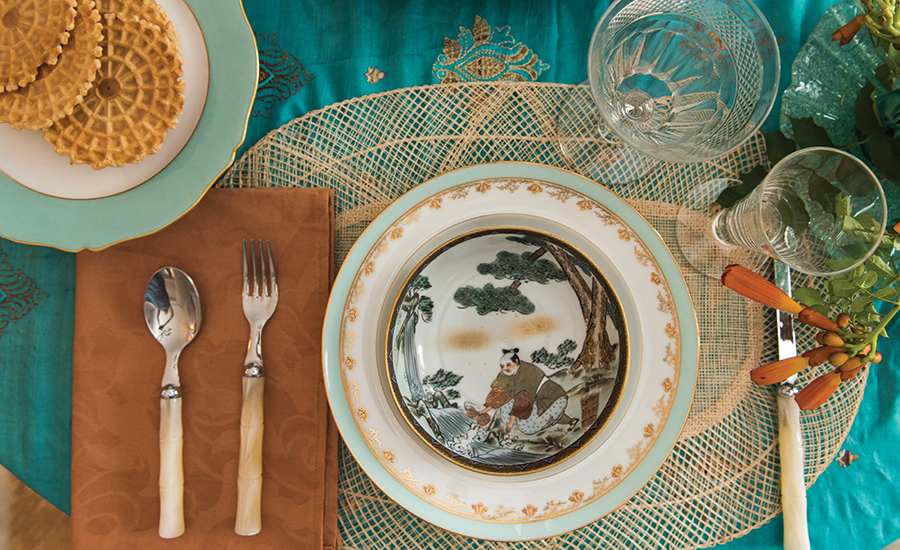
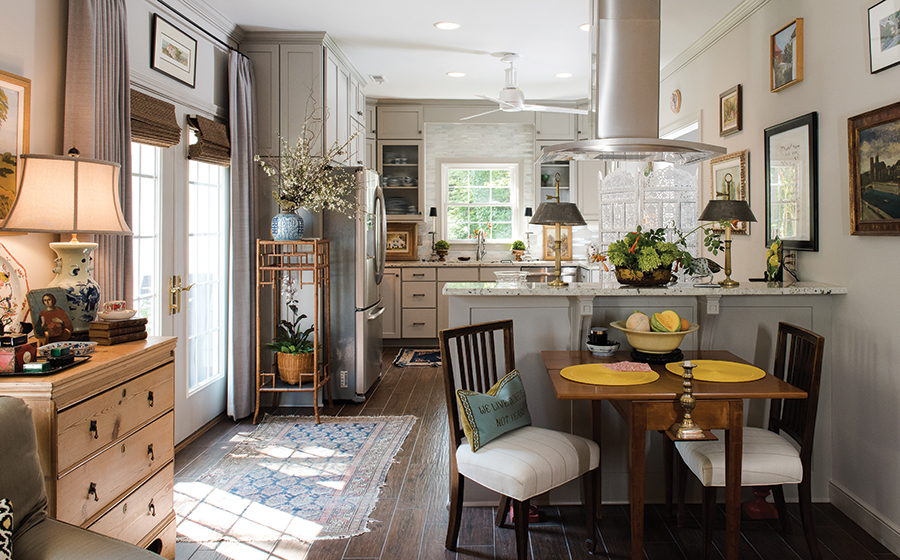
The original townhouse floor plan was deliberately made more open when remodeled on the first level apart from the master bath. The prior owner expanded doorways between the living room, dining room and kitchen. The kitchen was also opened and upgraded in a more modern and dark-hued style of cabinetry, flooring and surfaces than his previous all-white kitchen.
While the kitchen was more modern than Nabors might have chosen, he has warmed up to it.
In fact, it won praise from friends. The room was beautifully done, he concedes, and Nabors came to concede that it’s not only livable but pleasant.
After a period of painting and refurbishment, he spent weeks trying to curate his new home. Although he was not able to choose the floor tile that had been installed throughout, nor the kitchen refurbishment, he pronounces it tasteful and fresh.
The kitchen opens onto what Nabors calls his “keeping room,” or den, which has a generously sized fireplace and raised hearth. Here is where Nabors spends downtime — he explains much of the time in quarantine earlier this year was spent in that room. Quarantine time also allowed him to feather his nest.
That sanctuary was made deliberately cozy. Nabors tossed an Indian quilt on the back of the neutral sofa and “the big turquoise pillow in the center is Turkish.”
The layered, collected look is one especially favored by British designers. It also spoke to comfort.
Over the tiled flooring he laid a colorful rug for warmth, another possession which he says he’s “had since my 20s.”
There are “new” acquisitions scattered about. An English pine chest from a Greensboro antiques importer was originally chosen for his parents, who passed it to him. A William and Mary—style sofa, one generously sized and neutrally upholstered, is also a piece from his parents. Made by Southwood and upholstered in a custom fabric, it is one of a matched pair. He inherited the larger of the two thanks to his parents downsizing move.
In the keeping room is yet another long-loved piece in front of the bar, a reproduction French cherry game table where Nabors frequently has meals.
He has become adroit at “using favorite pieces in new ways.”
“Reinventing and renovating are good for the times,” Nabors observes. “Everybody’s got a budget, rationalizing the money they’re spending. A good designer can show how to refresh what you have.”
Nabors’s favorite designers are masters of reinvention.
“Mark Sikes, a designer whose work I appreciate, has photographed his wonderful Mediterranean house, redecorated with the same elements in at least three different looks,” he says. “I find that inspiring for those of us who want (or need) to work with the design elements we have.”
Nabors’ reuse and repurposing of favorite finds is something he hones. He was well ahead of the trend.
Only a few new things — although still vintage — have appeared here. A handsome pair of demi lune tables from Carriage House Antiques flank a Dutch table now positioned in the bay window, a place where he likes to serve hors d’oeuvres or drinks in the living room.
Nabors’ talents are surprisingly complementary: He is as pragmatic as he is creative. He currently works for the furniture industry. Prior to that, he was a banker working as a freelance stylist and designer in his free time. Banking made him particularly strong at conserving design clients’ money — he says he understands budgets and appreciates practicalities.
After his banking days, he was hired by Thayer Coggin, a renowned legacy company in High Point that manufactures midcentury modern furniture. During the company’s annual midyear shutdown, Nabors normally satisfies his travel itch. Travel is something that refreshes his creative eye and spirit.
This year, of course, all plans were off. Rather than traveling, Nabors was ensconced in his new home.
“Unfortunately, a summer trip to India had to be cancelled due to Covid-19,” he explains. So, India has been much on his mind, Nabors says. He instead “brought India home.”
He placed an Indian screen, painted white, between the kitchen and dining room. “I decided to move it down for the summer,” he says. Again, it’s a keepsake: “I’ve owned that piece since my 20s. It was black when I found it.”
Indian influences are now more prevalent than anything else in the new décor, Nabors says, most especially when he sets a table.
He points out that on the dining room a teal-colored Indian sari serves as the tablecloth. A whimsical Chinese export parrot adds a touch of humor.
For added color impact, Nabors layered orange napkins and colorful vintage Asian porcelain bowls.
They look pricy. But no.
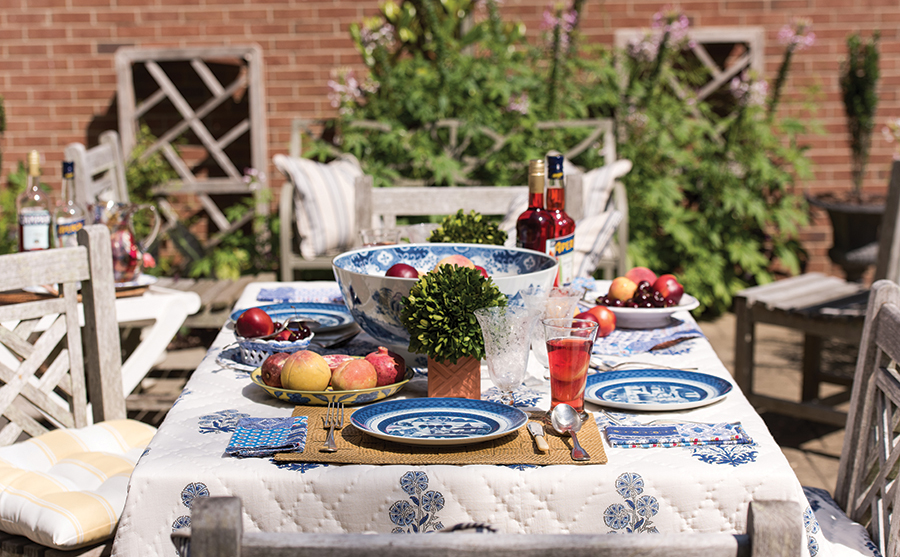
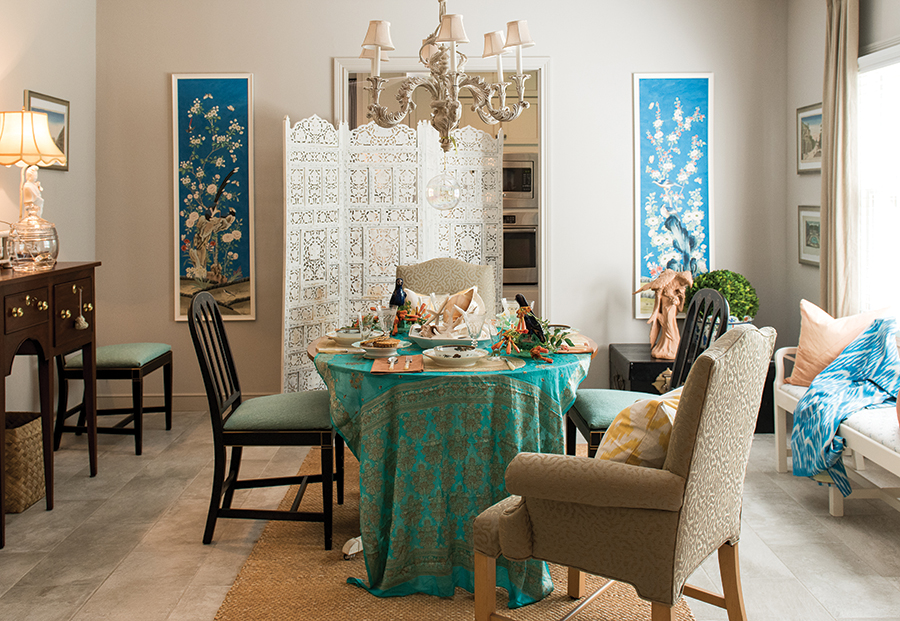
“The bowls were inexpensive,” he assures, “so I can put them in the dishwasher.” While many of the things he has collected appear costly, he mixes high and low cost textiles and objects.
As pandemic restrictions eased, Nabors satisfied his love of vintage finds, continuing to collect and resell antiques and collectibles in the Triad at Carriage House Antiques and the Antique Marketplace, although they operate on a restricted schedule.
He also became his own customer, Nabors laughs. “I shopped from my own space.” Sometimes he brought finds home rather than part with them — as was the case with the porcelain bowls.
Now 50, he has been buying and reselling since he was a college kid interested in art and history.
While earning a graduate degree in English at the University of Florida in Gainesville, Nabors roamed historically rich northern Florida. He visited resort and retirement areas where antiques were plentiful and cheap. “There is no better place to shop for antiques than where the wealthy choose to retire.”
Nabors acquired “great old pieces at low prices.”
After graduate school, Nabors returned to the Triad with a haul from antiquing junkets.
He first began reselling in the former Carolina Collection in the old Pomona cotton mill, rehabbed in the 1970s as an outlet mall called Cotton Mill Square. It was “among the nicest venues for antiques in the area at that time.”
He made important friendships and connections that endure today. When the Carolina Collection closed 20 years ago, Nabors moved to the Red Collection that followed, and, later, to the Antique Market Place. His style caught the attention of blogger Jason Oliver Nixon, then a New York–based designer, who featured Nabors’ space in his writing. (Nixon has a studio in Thomasville.)
Meanwhile, customers frequently requested Nabors’ help with design edits, a skill that Nabors has polished.
Sharon James became one such client after meeting him at the original Red Collection on Merritt Drive.
She admired Nabors’ spatial abilities and curatorial eye.
“I think I met Todd in 2002 since I moved here in 2000. He has helped me two or three times with rearranging various rooms.”
Nabors expended energies doing the very same thing for himself. Within his new home, he had more wall space and could use more art than ever before.
He displays a range of types of artwork, including a series of four sketches by Triad artist David Bass that were given to him by a dear friend.
Long fascinated with the French artwork known as vue d’optique, which means perspective view, Nabors collects etchings of elaborate European gardens and architecture. Among the dozen or so that he owns is a view of the Palais du Luxembourg.
These images, although now framed, were originally viewed through a “zograscope,” also called an “optical diagonal machine” — a sophisticated version of the popular View-Master toy. The images offered a sense of depth.
“You could go into a pavilion and be shown these pieces; and the wealthy had them in their drawing rooms.” Nabors has also resold them on occasion when he amasses too many.
“I’m fascinated that you can buy something from the 18th century that’s not expensive,” he marvels. The images are from various countries, but the style and colors are consistent. “I also love the color of blue — Prussian or cerulean blue — in the skies, which relates all the subjects.”
Cerulean, a difficult shade to describe, was pulled from the vue d’optique prints for another interior accent color.
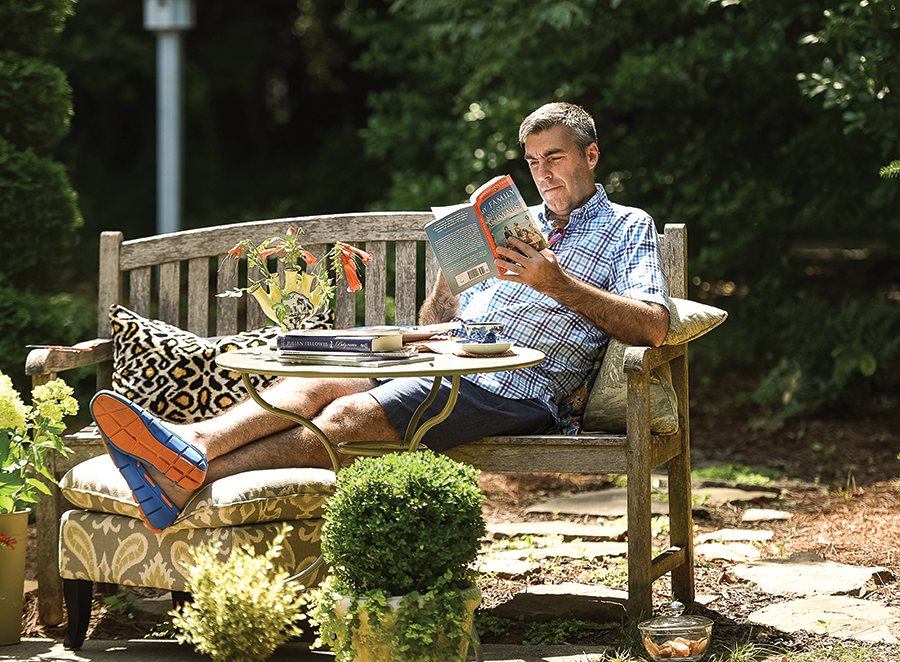
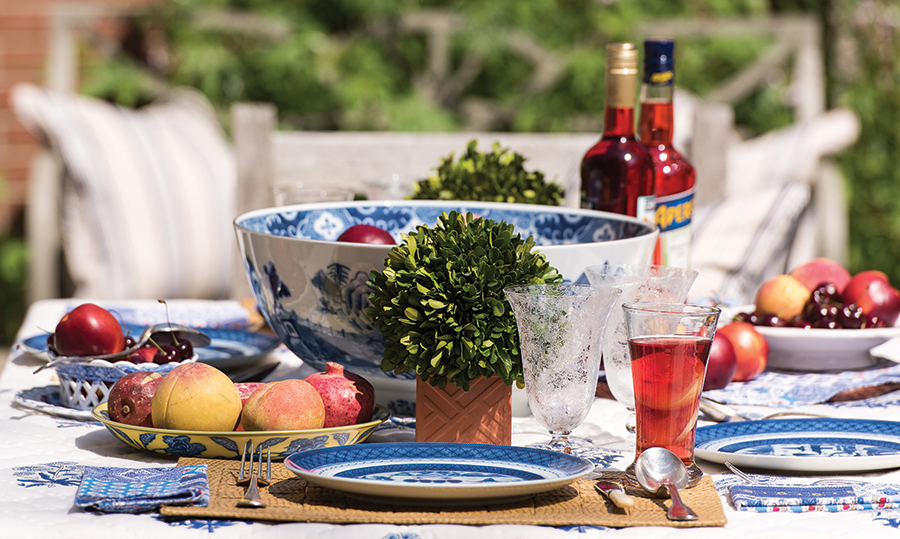
Chinese reverse paintings on glass are displayed throughout the downstairs.
While Nabors tries to edit with Japanese discipline, he admits it’s difficult. “I like stuff,” the designer jokes — but lightly.
He has begun to try things out, first living with collectibles, which were formerly packed away or occasionally resold.
At first, he envisioned changes for the upstairs, which was not yet remodeled. Paint and new carpet had to be chosen, and bathrooms on both floors were in his sights. “I wanted to be cognizant of the budget,” he adds.
Paint is one of the most dramatic and inexpensive ways to create change. In his former home (featured in O.Henry and Seasons magazines) Nabors worked within the constraint of much smaller rooms. There, he kept the color palette narrow and consistent in order to enhance the space, choosing Benjamin Moore’s lighter gray “Soft Chamois.” The master bedroom, now the “summer bedroom,” is on the first floor. It features a Gothic black screen he made while a college student. A handsome vintage brass thermometer acquired “years ago” hangs on the screen.
For the master bath, Nabors chose a variation of orange.
“A friend calls my master bath color Duchess of Windsor coral,” Nabors says. He likes the color. “It’s called ‘Apricot’ at Sherwin-Williams.”
He moved a bedroom wall and closet, gutting the bathroom to allow for a better layout. Nabors installed a handsomely patterned tile floor, topping a gray faux bamboo vanity with Carrara marble, choosing a glass shower door and chrome fixtures. The bath appeared to double in size.
Upstairs is Nabors’ “winter bedroom” as it is seasonally warmer.
The upstairs bath was painted “almost a periwinkle color. I love it in that bathroom,” Nabors says. “It would be a bit much for a larger room. But my art looks great in there.”
Back downstairs again, the kitchen opens onto a walled brick courtyard enclosed with a custom wrought iron gate. The rectangular courtyard is more structured and English, furnished with two conversation and eating areas allowing for social distancing when entertaining.
As an end townhouse unit, Nabors’ dwelling not only gained more windows than the interior units, but also has the added bonus of a side yard. There was room for a rustic bench at the front. Here he opens mail or reads in morning shade, when the rear terrace is still bathed in sun.
“The morning sun, around 9 o’clock, makes the terrace glow,” he observes.
As the sun makes its exit, the terrace becomes a tranquil, shaded place for an afternoon drink. Accented with greenery, a metal garden bench scored at the Red Collection, and potted plants, Nabors slowly furnished the outdoor room.
When neighbors came for “socially distant” drinks, he dressed the table with blue-and-white cotton textiles imported from India, and mixed vintage glassware with blue-and-white china. For a centerpiece Nabors placed a large Mottahedeh bowl mounded with carved stone fruit, something which he has collected for ages. Small cachepots with boxwood topiaries serve as accents.
As the sun moved, cleomes, tall pink flowers rimming the terrace, grew radiant.
Nabors had been envisioning this outdoor dining scene during the long months of quarantine. Like everyone, he wanted to have guests over — even if only outside at a safe remove.
He admittedly dreamed of travel, too. He quotes Mark Twain, saying “travel is fatal to prejudice, bigotry and narrow-mindedness.” And then he muses, “I’ve traveled enough to want to travel a lot more. I didn’t get to take that Indian trip, but hope I will one day.” In the meantime, he says, “I’m very much under the spell.” Surrounded by art and lovely Indian textiles that he has purchased, Nabors will armchair travel from his serene home. OH
Cynthia Adams is a contributing editor at O.Henry.




